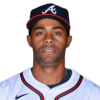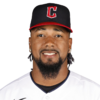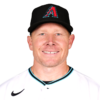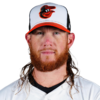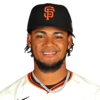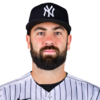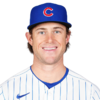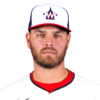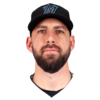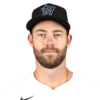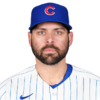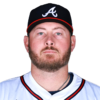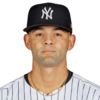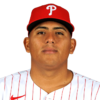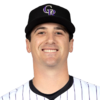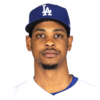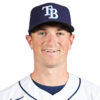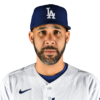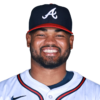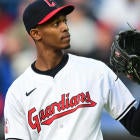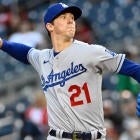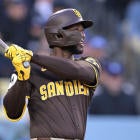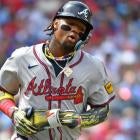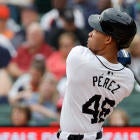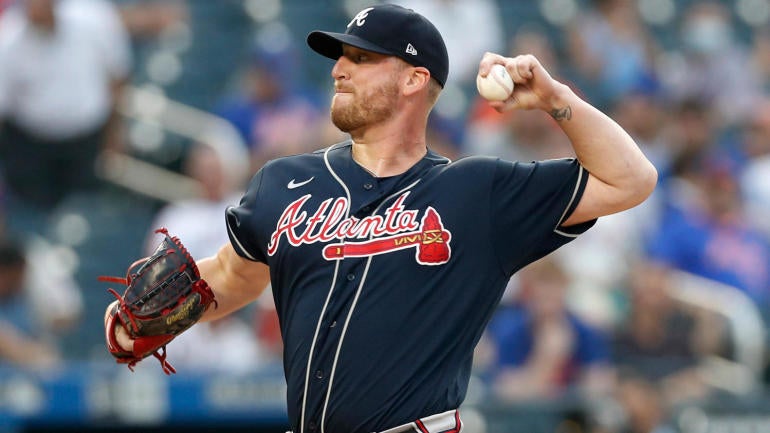
How long before I have to rewrite this whole thing, huh?
Predicting reliever roles at the start of a new season has increasingly become an exercise in futility. Modern managers don't care to make any official declarations but rather let their actions speak for themselves once the season begins. In the meantime, we're forced to read between the lines and use our best judgment at the one position where role is everything.
It's especially true in traditional formats that emphasize saves, but even in those that also reward holds, wouldn't you like to know whose role is whose? Of course you would.
These would be just the normal frustrations coming off a normal offseason. This offseason has been anything but. There was a flurry of moves just before the lockout in early December. There will be a flurry of moves now that the lockout has been lifted. Meanwhile, draft prep goes on with bullpens only halfway formed. Even if all those tight-lipped managers wanted to tell us exactly what they intended to do, most of them couldn't.
Position Strategy: C | 1B | 2B | 3B | SS | OF | SP | RP
As a result, the most secure closers (about a dozen or so) are being elevated unlike we've ever seen in early drafts -- which, apart from making a compelling case against drafting so early, goes against my longstanding principle of not paying for saves. I still abide by it even if the world has gone mad.
The primary reason is the same as it's always been: volatility. Somewhere between half and two-thirds of all MLB teams will end the season with a different closer than they began it. That's just the nature of the role, and while It's true that the most expensive closers are more likely to keep it than the cheaper ones, it's still technically possible they could lose all their value at the drop of a hat.
And that argument only addresses half the issue anyway. If new saves sources are popping up that often, why invest so much draft capital in meeting the needs of that one category? Yes, certain closers might help some in ERA, WHIP and strikeouts, but most of those contributions will be swallowed up by your starting pitchers. Besides, many of the new closers will be dominant relievers in their own right and just as capable of making small contributions in those other categories.
It's a matter of efficiency. If you can get the same basic number of saves at a much lower cost, why wouldn't you? I trust myself to read between the lines, to gauge a manager's leanings from the way he implemented his bullpen the previous year. If I'm wrong, the opportunity cost is minimal, and I'll have a chance to correct it later. The assurances Josh Hader gives me over Scott Barlow aren't worth 140 spots in the draft.
That's my stance in a traditional Rotisserie league, where people can start as many relievers as they have pitcher spots. It goes double in a format that limits each team to two relievers, as many Head-to-Head leagues do, and triple when the scoring is points rather than categories.
But first, let's look at the relievers who matter to all formats, grouped by the likelihood of them closing.
| 2022 ADP | 2021 ERA | 2021 WHIP | 2021 K/9 | |
|---|---|---|---|---|
Josh Hader
MIL RP
| 40 | 1.23 | 0.84 | 15.7 |
Liam Hendriks
CHW RP
| 43 | 2.54 | 0.73 | 14.3 |
Raisel Iglesias
LAA RP
| 73 | 2.57 | 0.93 | 13.2 |
Emmanuel Clase
CLE RP
| 82 | 1.29 | 0.96 | 9.6 |
Edwin Diaz
NYM RP
| 83 | 3.45 | 1.05 | 12.8 |
Ryan Pressly
HOU RP
| 86 | 2.25 | 0.97 | 11.4 |
Aroldis Chapman
NYY RP
| 94 | 3.35 | 1.31 | 15.5 |
Jordan Romano
TOR RP
| 110 | 2.14 | 1.05 | 12.1 |
Will Smith
ATL RP
| 118 | 3.44 | 1.13 | 11.5 |
Mark Melancon
ARI RP
| 148 | 2.23 | 1.22 | 8.2 |
You see those prices for Liam Hendriks and Josh Hader? Yeah, that's a spicy meatball. Other players going in that range include Xander Bogaerts, Austin Riley and Pete Alonso. A reigning Cy Young winner, Robbie Ray, goes even later. The cost is totally prohibitive, as far as I'm concerned, so I don't care to explain why I have a (very slight) preference for Hader over Hendriks.
Even Will Smith going in the first 120 picks makes me do a double-take. That's Round 10 in a standard 12-team league. In a 15-teamer, it's Round 8. I'm not saying I never draft a reliever from this group -- assurances are worth something, after all -- but it would have to be the sort of league where everybody privately agrees that paying up for closers is silly, allowing them all to slip 2-3 rounds beyond their ADP. Maybe you play in such a league. The data says that you don't.
Comparing him strictly to other closers and not the entire player pool, I'm higher than the consensus on Emmanuel Clase. His 100 mph cutter is the most GIF-worthy pitch in all of baseball, so difficult to square up that it's no wonder he had a 1.29 ERA. Plus, his primary competition for the role, James Karinchak, looks like he could be a permanent victim of the foreign substance crackdown. His stuff just didn't play the same in the second half.
I have to point out that Mark Melancon is the one of these things that's not like the others. Just because he has job security doesn't mean he's a high-end closer. He doesn't miss bats like the rest of the bunch and has now signed on with a bottom-feeder club that likely won't provide him with many save opportunities.
| 2022 ADP | 2021 ERA | 2021 WHIP | 2021 K/9 | |
|---|---|---|---|---|
Kenley Jansen
LAD RP
| 108 | 2.22 | 1.04 | 11.2 |
Giovanny Gallegos
STL RP
| 122 | 3.02 | 0.88 | 10.6 |
Craig Kimbrel
CHW RP
| 159 | 2.26 | 0.91 | 15.1 |
Camilo Doval
SF RP
| 169 | 3.00 | 1.04 | 12.3 |
Scott Barlow
KC RP
| 180 | 2.42 | 1.20 | 11.0 |
Corey Knebel
PHI RP
| 183 | 2.45 | 0.97 | 10.5 |
Joe Barlow
TEX RP
| 220 | 1.55 | 0.83 | 8.4 |
Dylan Floro
MIA RP
| 247 | 2.81 | 1.22 | 8.7 |
This group is where my bread is buttered. The relievers I'm looking to draft are pretty much all right here. I'm fairly confident they'll begin the year as closers for their respective teams, but they aren't being drafted that way -- like, at all.
OK, so Kenley Jansen is, but he's here by technicality. Until he signs with a team, I can't say for sure that he's in line to close, but that's my expectation, as it seems to be everyone else's. I also don't care for Giovanny Gallegos' cost given that the Cardinals don't seem to want him as their closer. They've been backed into that corner a couple times before only to move him back to setup duties, and I fear the same will happen again. If he was going 50 picks later, like Camilo Doval, the risk/reward would stack more in his favor.
Kimbrel is more or less in the same boat as Jansen. True, he's not a free agent, but he's expected to be traded somewhere to close. He has a higher overall ceiling and nearly as strong of a track record as Jansen. Normally, he's too much of a luxury for me, but for however long the uncertainty keeps his cost down, I'm happy to take advantage.
The trio of Doval, Scott Barlow and Dylan Floro is quickly becoming a habit for me, but the specific names aren't what's important. Point is I'd rather have three probable closers than two surefire ones even before factoring in the difference in cost. It puts me on a better saves trajectory to begin the season -- one that might just carry me through to the end.
| 2022 ADP | 2021 ERA | 2021 WHIP | 2021 K/9 | |
|---|---|---|---|---|
Blake Treinen
LAD RP
| 172 | 1.99 | 0.98 | 10.6 |
Taylor Rogers
MIN RP
| 208 | 3.35 | 1.14 | 13.2 |
Gregory Soto
DET RP
| 212 | 3.39 | 1.35 | 10.7 |
Garrett Whitlock
BOS RP
| 233 | 1.96 | 1.10 | 9.9 |
Lou Trivino
OAK RP
| 235 | 3.18 | 1.25 | 8.2 |
Lucas Sims
CIN RP
| 251 | 4.40 | 1.11 | 14.6 |
Andrew Kittredge
TB RP
| 266 | 1.88 | 0.98 | 9.7 |
Rowan Wick
CHC RP
| 307 | 4.30 | 1.35 | 11.4 |
Ken Giles
SEA RP
| 320 | 1.87^ | 1.00^ | 14.1^ |
Carlos Estevez
COL RP
| 355 | 4.38 | 1.49 | 8.8 |
Tanner Rainey
WAS RP
| 506 | 7.39 | 1.71 | 11.9 |
Chris Stratton
PIT RP
| 555 | 3.63 | 1.30 | 9.8 |
Luis Garcia
SD RP
| ----- | 3.24 | 0.99 | 9.2 |
Tyler Wells
BAL RP
| ----- | 4.11 | 0.91 | 10.3 |
^last healthy season (2019 for Giles)
Here, I've taken the liberty of projecting a closer for every remaining team, but I don't have a good read on any of these situations yet, which is why I view these relievers more as lottery tickets than genuine assets worthy of a draft premium. I may get some pushback on Blake Treinen, who has been an All-Star closer before and is in line to take over for the Dodgers if Kenley Jansen walks. But the Dodgers may be the one team that can bring in whomever they want to close, and as you may have already heard, the offseason isn't over yet.
I may also get pushback on Gregory Soto, who manager A.J. Hinch named his closer early in the offseason, but frankly, given the way Hinch handled his bullpen all season, I don't believe him. Michael Fulmer was the one getting saves down the stretch, and it's not like Soto is some lockdown reliever.
I'll also express a higher degree of confidence in Taylor Rogers and Lou Trivino closing for their teams and would prioritize them, along with Treinen and Soto, over the others. It wouldn't surprise me if some of these never broke free from a closer committee, as was true last year for Lucas Sims with the Reds and Andrew Kittredge with the Rays. Below you'll find some of the relievers likely to split save chances with them.
| 2022 ADP | 2021 ERA | 2021 WHIP | 2021 K/9 | |
|---|---|---|---|---|
David Bednar
PIT RP
| 211 | 2.23 | 0.97 | 11.4 |
Jake McGee
SF RP
| 216 | 2.71 | 0.91 | 8.8 |
Devin Williams
MIL RP
| 255 | 2.50 | 1.19 | 14.5 |
Matt Barnes
BOS RP
| 256 | 3.79 | 1.12 | 13.8 |
Paul Sewald
SEA RP
| 268 | 3.06 | 1.02 | 14.5 |
James Karinchak
CLE RP
| 301 | 4.07 | 1.21 | 12.7 |
Chad Green
NYY RP
| 312 | 3.12 | 0.88 | 10.7 |
Drew Steckenrider
SEA RP
| 313 | 2.00 | 1.02 | 7.7 |
Anthony Bender
MIA RP
| 331 | 2.79 | 1.06 | 10.4 |
Josh Staumont
KC RP
| 337 | 2.88 | 1.07 | 9.9 |
Michael Fulmer
DET RP
| 359 | 2.97 | 1.28 | 9.4 |
Kyle Finnegan
WAS RP
| 376 | 3.55 | 1.48 | 9.3 |
Cole Sulser
BAL RP
| 397 | 2.70 | 1.12 | 10.4 |
Diego Castillo
SEA RP
| 440 | 2.78 | 0.98 | 11.6 |
Tyler Matzek
ATL RP
| 460 | 2.57 | 1.22 | 11.0 |
Art Warren
CIN RP
| 564 | 1.29 | 0.90 | 14.6 |
Spencer Patton
TEX RP
| 613 | 3.83 | 1.20 | 10.2 |
Kirby Yates
ATL RP
| 615 | 1.19^ | 0.89^ | 15.0^ |
Jose Alvarado
PHI RP
| 623 | 4.20 | 1.60 | 11.0 |
^last healthy season (2019 for Yates)
If I'm wrong about anyone in the previous two groups, chances are it's because one of these guys is closing instead. The teams don't align perfectly. High-profile setup men Devin Williams and James Karinchak get a nod here even though they're backing up surefires Josh Hader and Emmanuel Clase. I'm also leaving the door open a crack for one of Tyler Matzek and Kirby Yates to unseat Will Smith in Atlanta. The odds of them stepping into save chances, though, are low.
But I wouldn't classify them as high for anyone here. Generally, these relievers are more for the scout team than the draft board, but some may be draftable in deeper leagues where you're looking to preempt a free agent bidding war. The most promising, I think, are David Bednar, Matt Barnes and Michael Fulmer, who I suspect are running close to 50/50 with their closing competitors in Pittsburgh, Boston and Detroit. Also, Jake McGee is the obvious next in line for the Giants should Camilo Doval implode.
From a pure talent perspective, I like the Mariners' Paul Sewald, but Diego Castillo and Drew Steckenrider are also listed here, as well as Ken Giles from the previous group. Scott Servais' bullpen tendencies last year were the most frustrating of any manager, surpassing even Kevin Cash's with the Rays, and I'm not sure he'll be able to resist mixing and matching with those four.
| 2022 ADP | 2021 ERA | 2021 WHIP | 2021 K/9 | |
|---|---|---|---|---|
Ranger Suarez
PHI RP
| 147 | 1.36 | 1.00 | 9.1 |
Luis Severino
NYY RP
| 157 | 3.39^ | 1.15^ | 10.3^ |
Michael Kopech
CHW RP
| 168 | 3.50 | 1.12 | 13.4 |
Cal Quantrill
CLE SP
| 229 | 2.89 | 1.18 | 7.3 |
Alex Reyes
STL RP
| 267 | 3.23 | 1.35 | 11.8 |
Aaron Ashby
MIL RP
| 269 | 4.55 | 1.17 | 11.1 |
Drew Rasmussen
TB RP
| 273 | 2.84 | 1.08 | 8.6 |
Cristian Javier
HOU RP
| 276 | 3.55 | 1.18 | 11.6 |
Nate Pearson
TOR RP
| 330 | 4.20 | 1.73 | 12.0 |
David Price
LAD RP
| 489 | 4.03 | 1.43 | 7.1 |
Carlos Hernandez
KC RP
| 502 | 3.68 | 1.28 | 7.8 |
Reynaldo Lopez
CHW RP
| 554 | 3.43 | 0.95 | 8.6 |
A.J. Puk
OAK RP
| 574 | 6.08 | 1.80 | 10.8 |
^last healthy season (2018 for Severino)
SPARPs stands for "starting pitchers as relief pitchers," and lo, here are the starting pitchers with relief pitcher eligibility. They're most in demand in points leagues, where volume is rewarded over efficiency, which means a good starting pitcher will outscore a good closer most of the time.
But the operative word there is good, which people tend to forget, and the only two from this group that I'm confident are good are Ranger Suarez and Luis Severino. Even they have their downsides. Suarez is mostly unproven, having made only 12 starts last year, and Severino has hardly pitched since 2018 because of Tommy John surgery. Still, both have the talent to back up their production to this point, and their production is indeed strong.
Cal Quantrill's production was also strong last year, but I'm not as convinced of the talent. He's not a big source of strikeouts or groundballs and overachieved by most metrics last year. Nonetheless, I'd be willing to roll the dice on both him and former top prospect Michael Kopech in a standard 12-team points league, provided the latter has a rotation spot.
Just based on talent, I could also get behind drafting Aaron Ashby, Alex Reyes, Cristian Javier and Nate Pearson if I was convinced they had a rotation spot, but as of now, they appear to be on the outside looking in.
Which sleepers, breakouts, and busts do you need to know? Visit SportsLine now to get rankings for every single position heading into your draft, all from the model that called Brad Hand's disappointing season, and find out.









